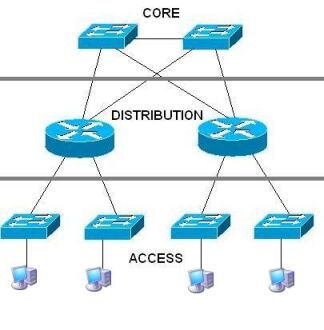A core network, or network core, is the central part of a telecommunications network that provides various services to customers who are connected by the access network. One of the main functions is to route telephone calls across the PSTN.
Typically the term refers to the high capacity communication facilities that connect primary nodes. Core/backbone network provides paths for the exchange of information between different sub-networks. For enterprise private networks serving one organization, the term backbone is more used, while for service providers, the term core network is more used.
In the United States, local exchange core networks are linked by several competing interexchange networks; in the rest of the world, the core network has been extended to national boundaries.
Core/backbone network usually has a mesh topology that provides any-to-any connections among devices on the network. Many main service providers would have their own core/backbone networks, that are interconnected. Some large enterprises have their own core/backbone network, which are typically connected to the public networks.
The devices and facilities in the core / backbone networks are switches and routers. The trend is to push the intelligence and decision making into access and edge devices and keep the core devices dumb and fast. As a result, switches are more and more often used in the core/backbone network facilities. Technologies used in the core and backbone facilities are data link layer and network layer technologies such as SONET, DWDM, ATM, IP, etc. For enterprise backbone network, Gigabit Ethernet or 10 Gigabit Ethernet technologies are also often used.

